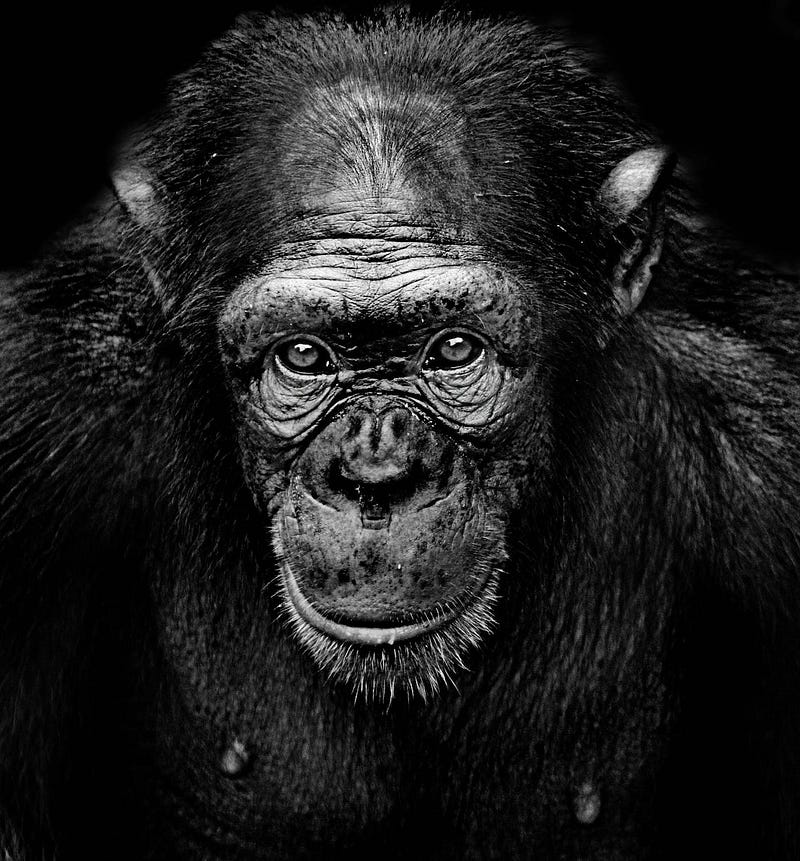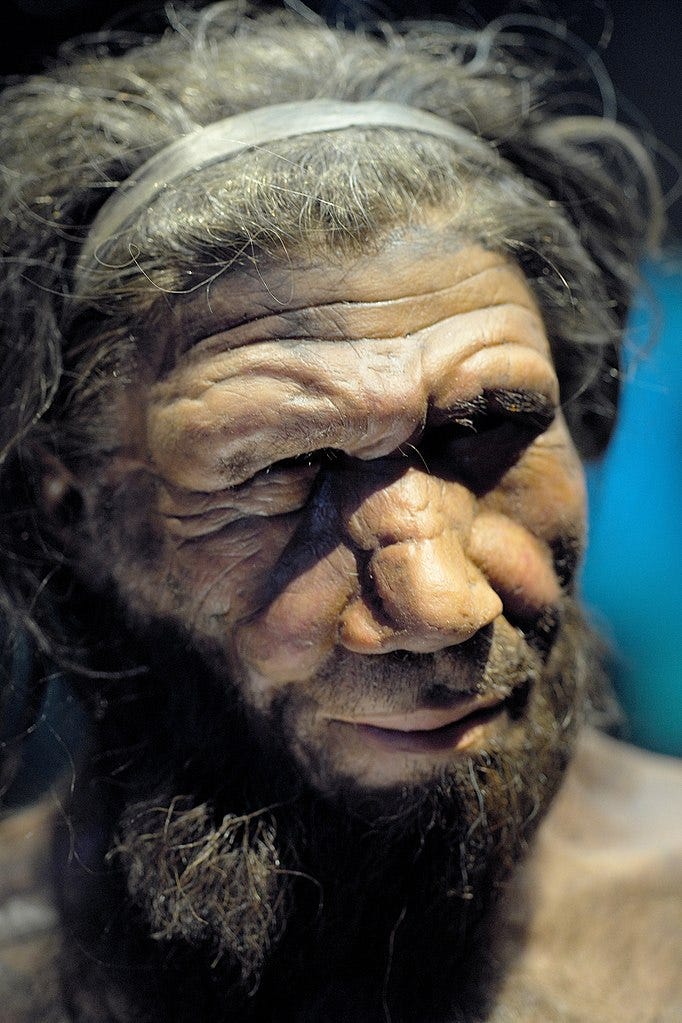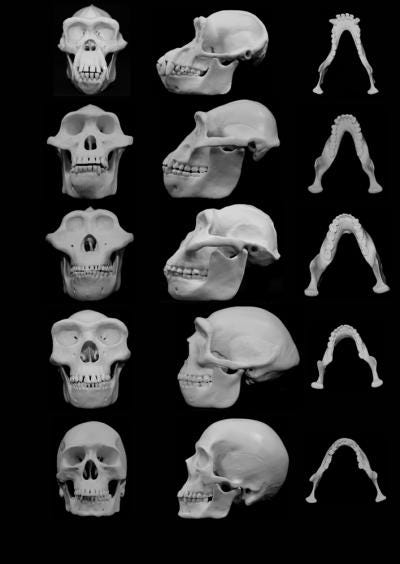The Evolution of Human Facial Structure: A Shrinking Mystery
Written on
Chapter 1: Understanding Facial Evolution
You might not have considered it, but the size and shape of your face are quite remarkable in the evolutionary context. Unlike our ancestors and closest relatives, such as chimps and bonobos, modern humans exhibit shorter and smaller facial structures. These features, particularly the expressive nature of human eyebrows, set us apart from other hominids.
Chimps and bonobos possess longer faces that appear more aggressive and lack the expressiveness found in human faces. This distinction highlights the uniqueness of human facial features.

The facial characteristics of Neanderthals, our ancient relatives, were also more elongated, showcasing a robust bone structure. Research led by Steven Churchill, a professor of evolutionary anthropology at Duke University, reveals that interbreeding between humans and Neanderthals resulted in the incorporation of some of these traits into modern human faces. Churchill notes, “Neanderthals were generally larger than early humans. Over time, human facial sizes diminished, yet some features retained evidence of that interbreeding.”

Scientists propose various theories to explain the trend towards smaller, less aggressive human faces. One theory suggests that the original bulkiness of human faces may have been an adaptation for the rigorous chewing required by ancient diets, predating the use of fire and cooking utensils.
Section 1.1: The Role of Conflict in Evolution
Another hypothesis, highlighted in the journal Biological Reviews in 2014, posits that prehistoric conflicts may have driven the evolution of stronger facial bones. David Carrier, a biologist at the University of Utah, explains, “In modern human confrontations, the face often becomes the primary target. Our findings suggest that the facial bones most likely to fracture during fights are also those that have evolved to be more robust.”
Subsection 1.1.1: The Impact of Dietary Changes
As time passed, human faces began to shrink, long before the advent of modern combat sports. Various scientists have explored reasons for the evolution towards smaller faces alongside larger brains. One potential factor is the advent of cooking, which facilitated easier chewing and led to changes in facial structure. The agricultural revolution, commencing around 12,000 years ago, further reduced the need for extensive chewing, as diets became more refined.

However, a more recent theory suggests that the evolution of our facial features was also driven by the increasing need for nonverbal communication within growing social networks. A 2019 study in Nature Ecology and Evolution highlights the role of facial expressions in social interactions, as they are essential for forming and maintaining connections among individuals.

Paul O’Higgins, a professor of anatomy at the University of York, states, “Today, our facial muscles enable us to convey over 20 different emotions, which is likely more complex than what our early ancestors could express.” This increased facial dexterity allows humans to communicate a broader range of emotions, moving beyond mere aggression or joy.
Chapter 2: The Uniqueness of Human Faces
Another intriguing perspective on facial evolution was presented in Nature Communications, suggesting that our fascination with visual recognition has led to a diverse array of facial features. This variation enables humans to easily identify one another without relying on less sophisticated means of recognition.
Research indicates that certain facial characteristics, such as nose size, exhibit greater variability compared to other physical traits. Behavioral ecologist Michael J. Sheehan from UC Berkeley asserts, “Humans possess an exceptional ability to recognize faces, supported by a specialized region in the brain. Our findings indicate that natural selection has favored individual uniqueness to enhance recognition among peers.”
This uniqueness is so pronounced that even dogs can differentiate between human faces, even when viewed on screens. Interestingly, sheep have also been trained to identify humans based on photographs.
As human faces continue to evolve, experts believe the process remains ongoing. O’Higgins notes, “Modern diets and industrialized lifestyles may contribute to a further reduction in facial size. However, certain biological constraints, such as the need for adequate nasal cavity size for breathing, will limit these changes.”
While the future of human facial evolution remains uncertain, it’s clear that our faces will adapt as long as our species endures and interacts with changing environments and societies.
What’s the Biggest Human Relative That Ever Lived?
We’re relatively large among primates, but one ancient ape surpassed all others in size, and researchers have unraveled the story of its existence.
Follow Aha! for more fascinating insights into the science behind life’s most intriguing and unexpected questions. If you’re a writer, consider subscribing to my Writer’s Guide newsletter. Your support enables my continued reporting and writing efforts. Note: Portions of this article were previously published.